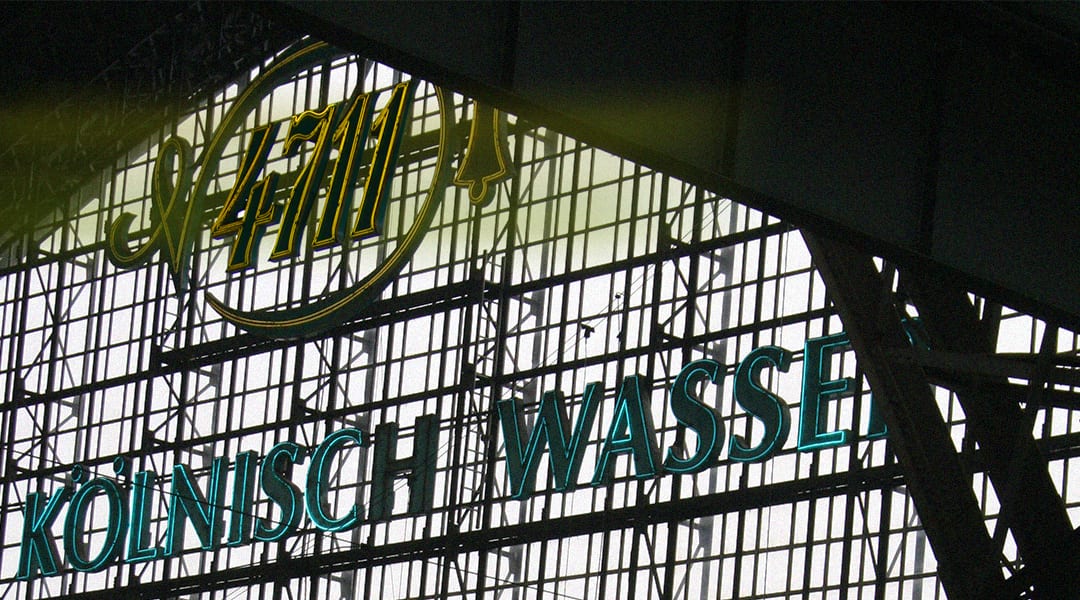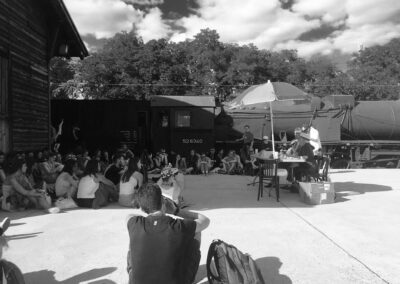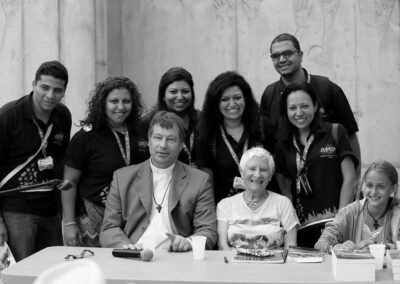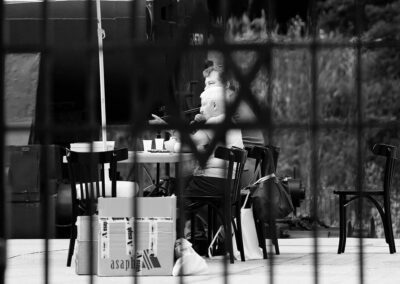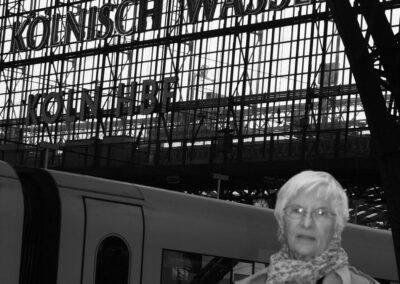The 4711 sign today in Köln, Germany
Köln, Germany 1939
We parted at Köln Hauptbahnhof. The date was Monday, July 24th 1939 in the evening. I didn’t realize it would be our last goodbye.
I remember looking up at the giant 4711 sign high above us.
After all these years, why is that picture still so vivid, hanging in my memory gallery?
Why are my parents’ faces, their tear filled eyes, their last embrace so dim and fuzzy?
I have returned to the station platform and look up. The 4711 sign is still there but my parents’ touch is forever gone.
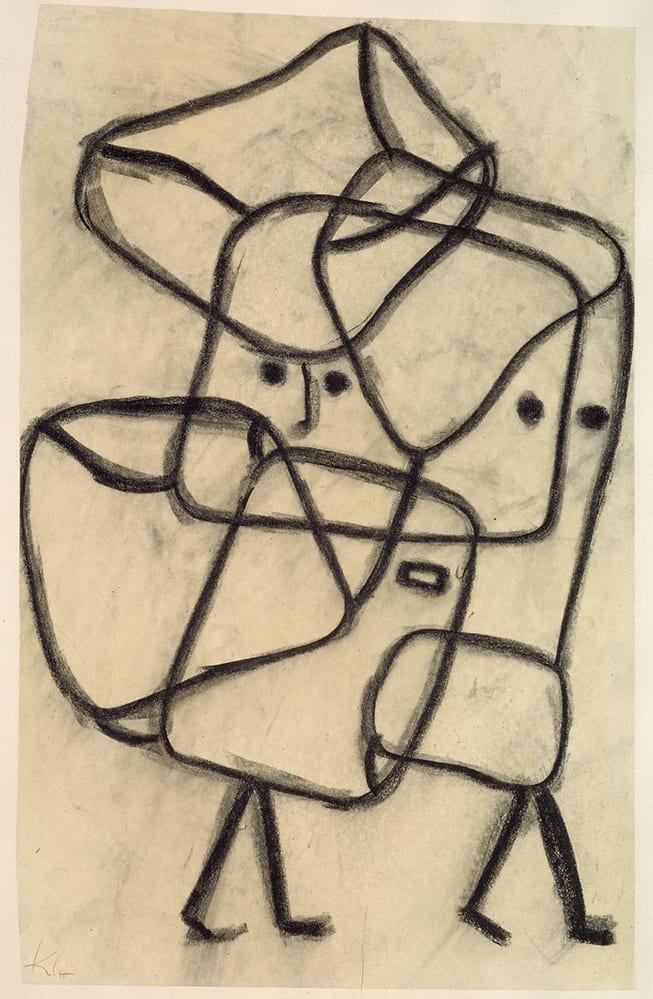
“Burdened children” Paul Klee 1930
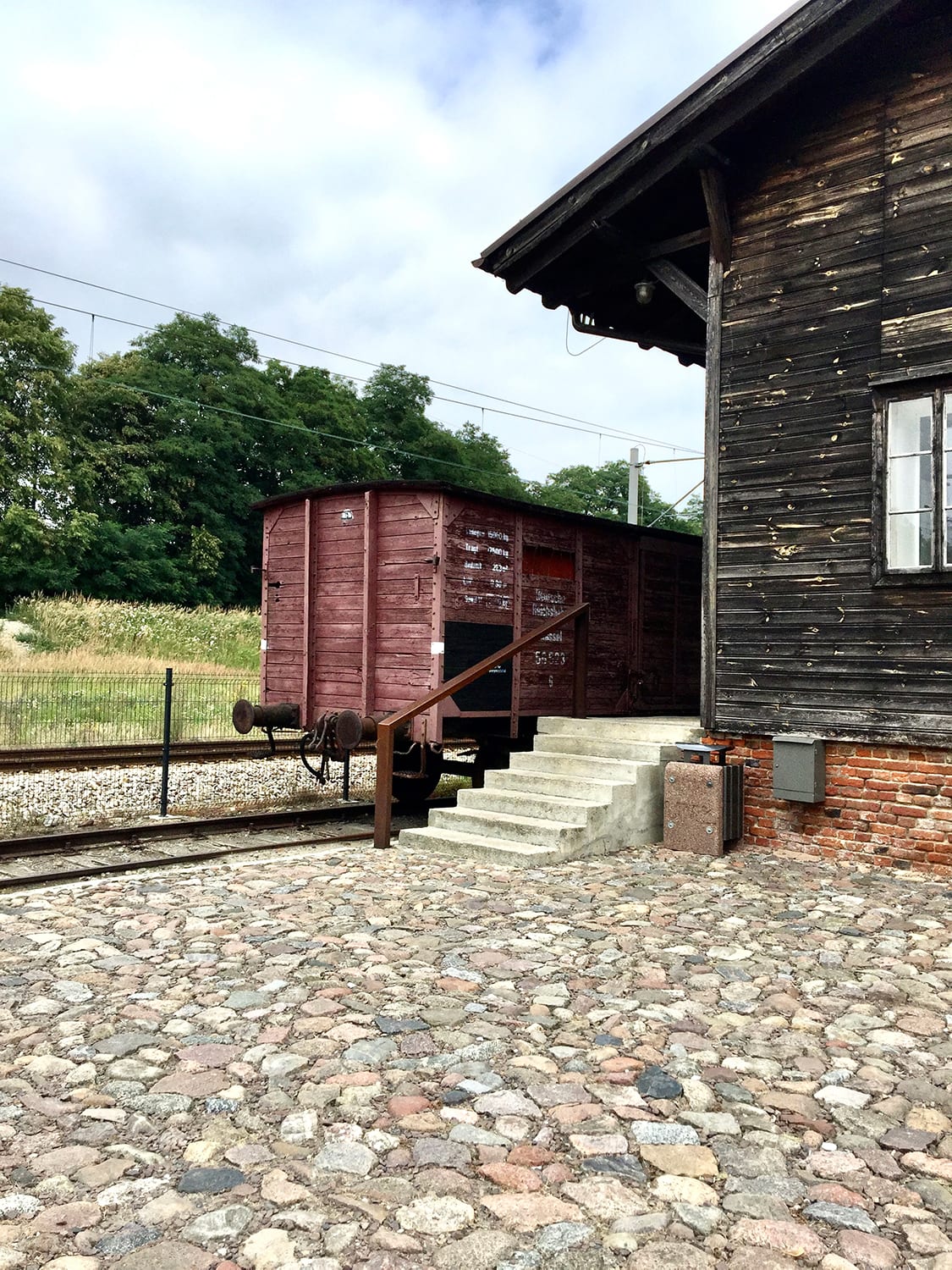
Today Radegast station is a memorial site. A box car like this was used to transport Jews.
Lodz, Poland 2016
Seventy eight years later, I am standing on another railway station platform, Radegast in Poland, at the edge of the former ghetto in Lodz. This is the exact spot where at the beginning of May 1942 my parents were driven into the cattle car on their last journey to Chelmno, the killing place.
How can such gaping, grievous wounds be healed?
On that same concrete station platform, touched by the soles of my parents’ feet, carrying the weight of their fear and despair, groups of young people sit on the hard ground in bright sunshine, listening as I speak their names — Amalie and Markus Zack — recovering their memory.
The year is 2016 and we are together in Lodz taking part in the festival, “Paradise in the City”.
Restored by Love
How did my path converge with 5,000 young people from 40 different countries?
I was born in Bonn, Germany in 1932.
In 2015 Gerold Jäger was sitting in his office at St Remigius, Bonn, a church dating from 1307. My good friends, Diemut and Martin Barth, walked in with a copy of Meine Krone in der Asche, the German version of my book A Garland for Ashes.
Gerold was part of the team preparing for “Paradise in the City” and when he read that my parents were held in the Lodz ghetto he emailed me and invited me to tell my story…

